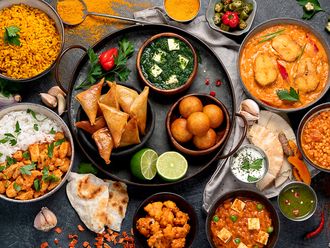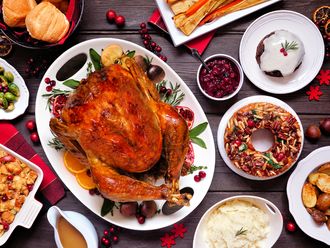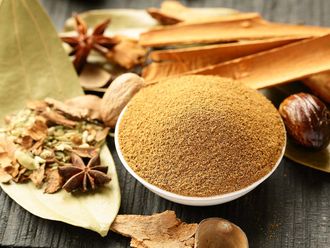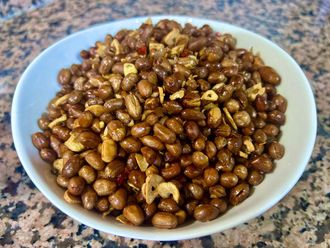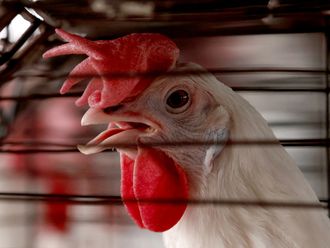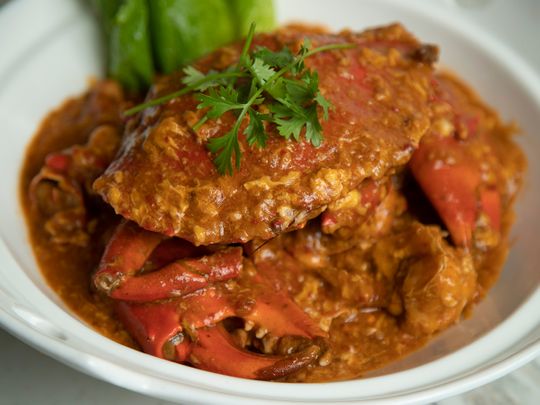
Dubai: A popular dish served in many Asian restaurants and street-side vendors are the Singaporean noodles. But you will not find such a dish in Singapore. Because it does not exist. As Gulf News Food took a deep dive into the Singaporean food culture, we discovered the mystery behind the ubiquitous noodles.
Officially known as the Republic of Singapore, this island city-state in maritime Southeast Asia is a former British colony and was once a part of Malaysia. This influenced the culture, of which food is an integral part. Malay (the language of Malaysia) and Mandarin are the most commonly spoken languages. A large population of South Indian expatriates live on this diamond-shaped island, said Sameer Purain, owner of Sedap, a Singaporean restaurant based in Dubai.
The Singaporean-Indian couple - Sameer and Mukta, moved to Dubai for work and missed eating authentic dishes. They would often go out and try Singaporean dishes, especially - mee goreng, which is quite popular in the UAE, but nothing quite tasted like “what we had at home”, they said. Even the chilli crabs lacked the taste, and they were pretty expensive. One thing led to another, and they started their own Singaporean restaurant – Sedap, which means tasty in Malay and an expression Singaporeans use pretty often.

The global popularity of Singaporean cuisine
Speaking to the Gulf News Food, Purain said: “Everyone who comes to Singapore tries the street food (read the hawker culture below), talks about it and forgets about it as soon as they go back.” Comparing Singaporean cuisine to their neighbouring country – Thailand, Purain explained that people who visit Thailand eat Thai food, and when they go back, they start looking for Thai restaurants in their home countries. To put it simply, they discover the taste, remember the flavours and search for it too. “But that’s not the case with Singaporean food. The food is popular, but not popular enough,” said Purain.
Purain also said that there is no dish called Singaporean noodles. “If you go to Singapore, people will not know about this dish because it does not exist. Maybe it is a way to catch people’s attention or to sound international. I think Asian restaurants name a popular type of noodles which their customers usually order as Singaporean noodles,” said Purain.
A melting pot of flavours and what makes the cuisine interesting
According to Singapore Nutrition and Dietetics Association, the main ethnic groups of this island are Chinese, Malaysian, Indians and Eurasian, and they follow the traditional cooking methods of their ancestors. Rice is their staple food, typically served alongside meat or vegetables. With the integration of different ethnicities, it is safe to say that the cuisine of Singapore is fusion.
Mukta Purain, co-owner of Sedap, said: “A typical dish such as mee goreng can have a blend of Malaysian, India or Chinese. Probably one of the only cuisines that are as multiverse as its culture. Even salted egg yolk prawns is a very Chinese ingredient, but we also put curry leaves in it.”
How different flavours are integrated
Popular cooking methods, such as stir frying, steaming, and slow cooking, are usually used. The food culture has taken inspiration from various ethnic groups that have settled on the island, Of which Chinese, Malaysians and Indians are large in number. This has constructed the food culture and flavours.
Chinese flavours and ingredients such as soy sauce, garlic, oyster sauce and sesame oil are used in dishes like Hainanese chicken rice (poached chicken with flavourful, oily rice) Fried Kway Teow (stir-fried rice noodles often with lard and dark sweet sauce).

Malaysian ingredients such as turmeric, galangal, tamarind, chilli, belacan (spicy dried shrimp paste), coconut milk, pandan (screwpine) leaves are used in dishes such as Assam Pedas (spicy tamarind) fish Nasi Lemak (rice cooked with coconut milk, paired with meat/vegetables) Beef Rendang (beef slow-cooked in coconut milk and spices for several hours). Indian ingredients such as chilli powder, cumin, coriander, cardamom, yoghurt, coconut milk and curry leaves are used in some of the popular dishes such as thosai (Dosa), chapati, naan (Indian style pancakes), fish head curry, tandoori chicken (marinated in yoghurt and chilli powder before baking in a clay oven) Biryani (rice with meat, fish, eggs or vegetables and spices).
The integration of ethnic groups through interracial marriages between the Chinese and Malaysian led to the creation of fusion cuisine known as the ‘Peranakan cuisine’, which uses stir rying as a popular cooking method.
In a Singaporean dish, you will find spice levels to be reasonably balanced. The hot flavour is usually derived from galangal or ginger and the famous red chilli sauce or paste called sambal – whose spice level can be modified as per taste. This is done keeping in mind the different ethnic groups of Singapore.
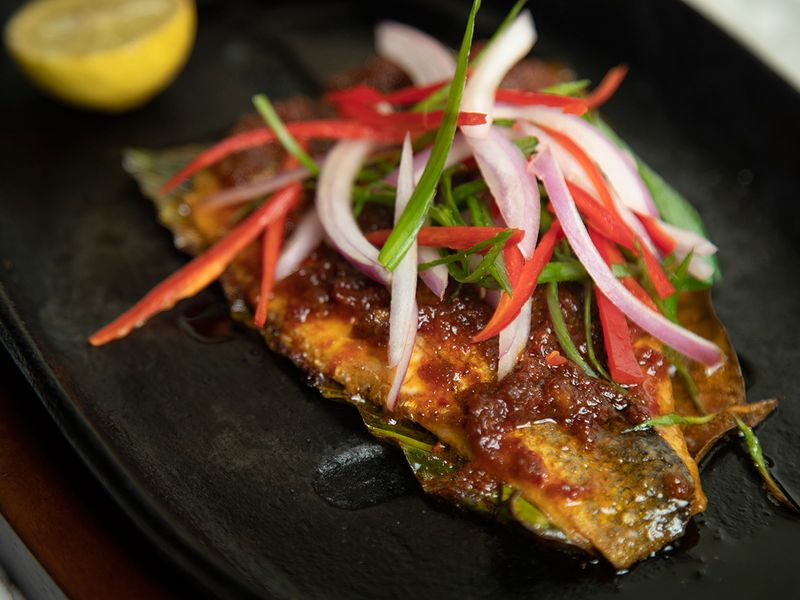
Food, space and community - the hawker culture
Purain said: “Hawker street food culture is a staple. It is usually affordable and located in a high-density population and touristy areas of Singapore.” Food is usually prepared for a large number of people and cooked for the masses. Eating at a hawker in Singapore is something that everyone does, regardless of the status quo or hierarchy. “You can find different races representing different cuisines. For example, you will find a Chinese stall, next to it an Indian or a Malay stall, so all the various cultures are represented under one roof,” said Purain. Visually, imagine sitting in a food court with multiple cuisine options to choose from.
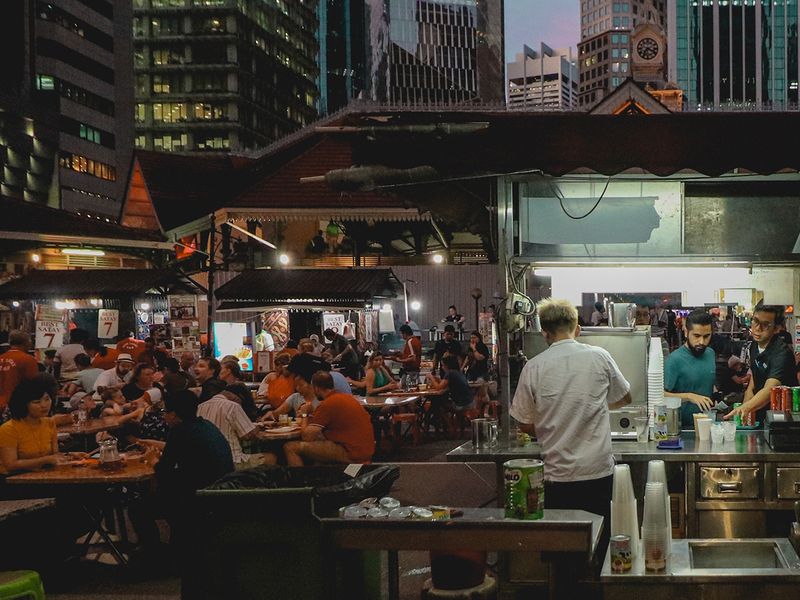
The working-class population prefers eating at hawkers and spend around 15 Singaporean Dollar (SGD) (Dh40) on three meals. Breaking it down further, a typical breakfast would cost about 3 SGD (Dh9), whereas lunch and dinner meals would cost around 5 to 6 SGD (Dh15 to 18), explained Purain.
The hawkers in Singapore are such a legendary part of the culture that they were successfully inscribed as Singapore’s first element on the United Nations Educational, Scientific and Cultural Organization (Unesco) Representative List of the Intangible Cultural Heritage of Humanity.
Singaporean meals, food debates and late-night suppers
“As Singaporeans, we are actually very obsessed with our food, to a point where there are intense debates that take place such as who serves the best mee goreng (also known as bakmi goreng, is a stir-fried noodle dish. It is made with thin yellow noodles stir-fried in cooking oil with garlic, onion or shallots, fried prawn, chicken, beef, or sliced bakso, chilli, Chinese cabbage, tomatoes, egg, and other vegetables or chicken rice is). You will hear such arguments taking place with friends and families,” said Mukta.
It is safe to say that Singaporeans take their food very seriously. A Singaporean will always talk about the food served to them, the ingredients, and flavours and give a comment or even critique it. They will not accept it as tasty, without going into the details of it, explained Purain.
A typical day in a Singaporean home starts with kaya toast – toasted bread with kaya, which is basically like a coconut pandan (screw pine) jam along with soft boiled eggs and a hot beverage – which can either be coffee or tea. The Singaporean style of coffee, or Kopi as it is called, is roasted in butter. Both tea and coffee are equally popular. Still, people usually prefer coffee in the mornings and a milk-based tea similar to chai called teh tarik (the method of pulling, which makes it foamy), in the evenings around 3.30 to 4 pm.
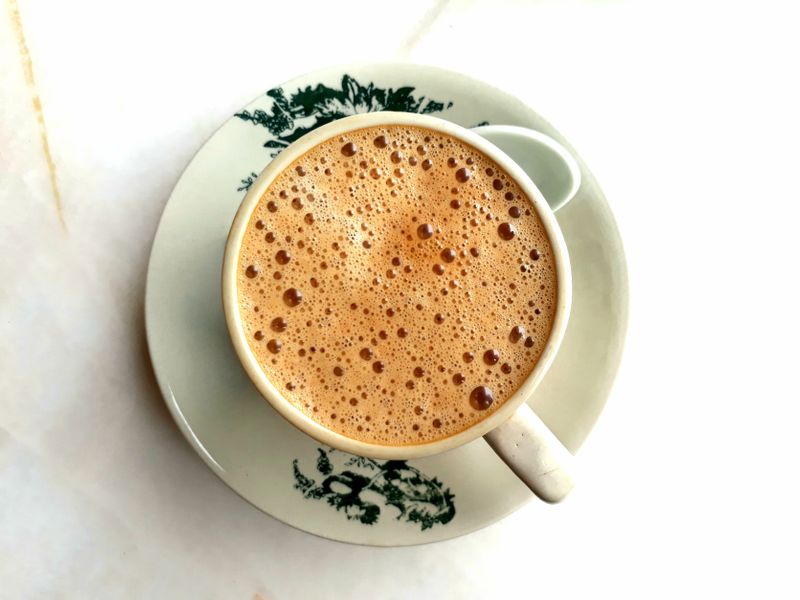
If you want to order coffee or tea without milk, simply ask for Kopi O or Teh O, where the letter ‘O’ stands for without milk.
In Singapore, a meal is a sharing concept, just like many Asian cuisines. If you are out with a group of friends or family, you would order one or two main courses and share them with rice or noodles. If alone or with colleagues, people usually stick to individual dishes to keep them clean and simple. Some popular single food dishes are chicken rice, mee goreng, char kuay teow (stir-fried Chinese-inspired rice noodle dish), and laksa (a spicy noodle soup from Malaysia). Whereas famous dishes people usually share are chilli crabs, whole fishes with sambal, ginger or spring onion, explains Purain.
Here is a step-by-step video guide to making the iconic chilli mud crab
Supper culture
While Singaporeans have three meals a day, supper culture is equally important. The majority of the population, which constitutes the Chinese, traditionally have early dinners around 6.30 pm. And as the night progresses, a supper is needed. Over time, this became a key part of the Singaporean food culture. The country’s cuisine is a melting pot of flavour and ingredients brought in by the island’s immigrants.
Here are two popular Singaporean recipes for mee goreng and seabass sambal.



